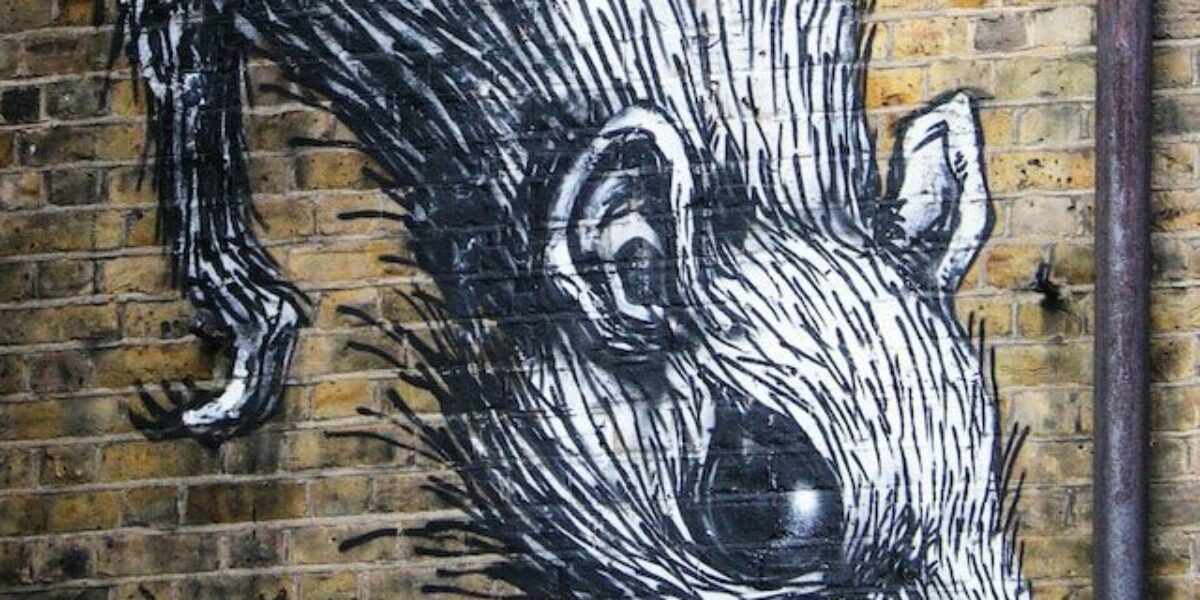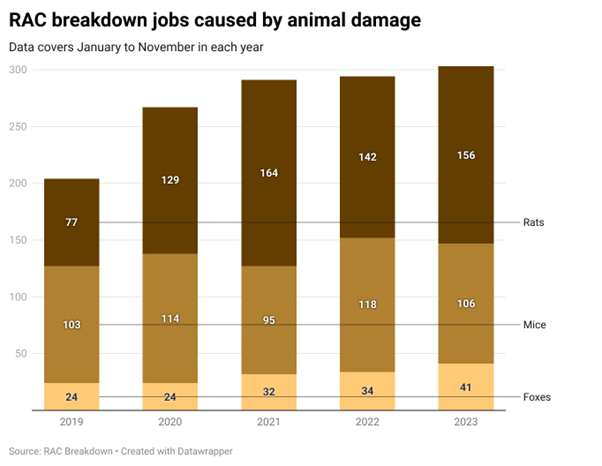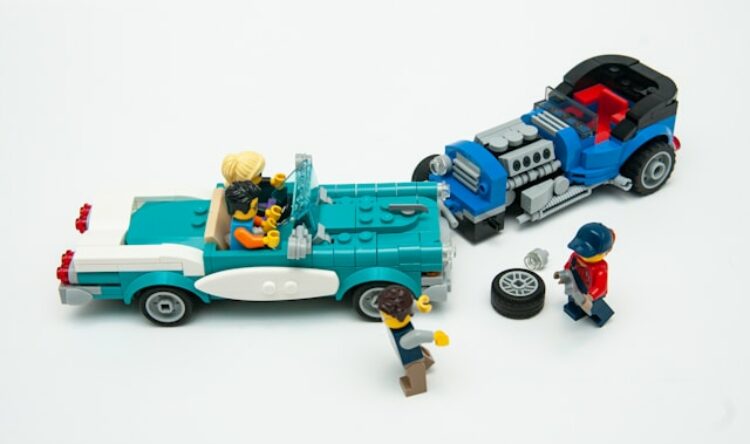Ratted out
Rodents dining out on the road
Record numbers of mice, rats and foxes ‘surprising’ customers caused serious damage to their vehicles. 2023 saw the biggest numbers in a continuous rise in rodent problems on the road.
The revelations come after reviewing thousands of patrol breakdown reports dating back to 2016.
Growing menace
Breakdowns caused by rodents have risen by 55%, from 196 incidents in the first 11 months of 2018, to a record 303 over the same period in 2023.
The problem worsens significantly as the seasons change, averaging a 66% increase from summer to autumn over the last five years.
Over the last year, patrol reports show rats had the biggest appetite for automobile parts. They are blamed for causing half (51%) of all animal damage incidents. Their work included gnawing fuel hoses, infesting engine bays and damaging headlights.
Numerous cases found foxes chewing speed sensor wiring, windscreen wiper blades and brake hoses underneath cars.
However, it is not just anti social behaviour to blame. Food left inside or in the vicinity of an unattended vehicle is a sure-fire way to attract unwanted visitors.
Open bags of pet feed stored in garages can lure mice and rats. While they are there, the vehicle’s piping often catches their attention, where they’re drawn to their very own ‘biting point’. Yes, peanut and soy-based oils and waxes used on parts, including diesel injector wires, gearbox insulation and primer bulbs, draw unwanted attention from the sharp toothed monsters.
A new housing crisis
Vehicles left standing and unattended for long periods can even become a comfy, dry, warm and secure home to rodents and lost pets.
RAC patrol Nick Isaac, who works around the South West of England, once found a squirrel using an air filter as its pantry.
“The car had lost power and had an odd smell,” says Nick. “When I lifted the bonnet and revved the engine the air filter moved like it was being sucked towards the engine. It turned out a squirrel had been taking nuts from a bird feeder and storing them in the air box, restricting air flow to the car.”
One patrol attended a Porsche where 10 mice had made a nest under the scuttle panel at the bottom of the windscreen.
Another was called to retrieve a more exotic creature: a baby pet python which had taken up residence behind a wheel trim. The snake had gone missing from the member’s home and was drawn to the car’s warm brakes. When the patrol pulled the trim off, there was the python all cosy and coiled up.
Alister Hughes, an RAC patrol in Cornwall, remembers an incident from this year where a cat managed to disconnect a battery in a Peugeot van. The curious cat crawled onto the engine, disconnecting the quick release battery terminal in the process. Alister said: “The van wouldn’t start, but the biggest giveaway was all the leftover fur and the neighbour telling me they’d been calling their cat the previous evening!”
Don’t invite unwanted guests
RAC Breakdown spokesperson Alice Simpson believes there are simple actions that can be taken to minimise the risks of rodent vandalism.
“Unfortunately, incidents like this are more common than drivers might expect, particularly over the winter months when animals look to take shelter from the cold conditions.
“To reduce the risk of animal damage, check your car if it hasn’t been driven for a week or more. The best advice is to make sure no food – for pets or humans – is left inside. Also check for unusual smells in the vehicle and be mindful of any dashboard warning lights that don’t disappear after a minute or two. Any foodstuff in garages should be kept in airtight containers or locked in metal bins.
“If you suspect your vehicle has sustained animal damage, whether that’s chewed cables, clogged air filters or a nibbled diesel priming bulb, you should contact a reputable mobile mechanic or use the RAC’s Approved Garage Network to find a local garage that provides quality repairs. Car insurance does cover animal damage, but it’s worth checking before you claim to see if the damage justifies the expense.”







